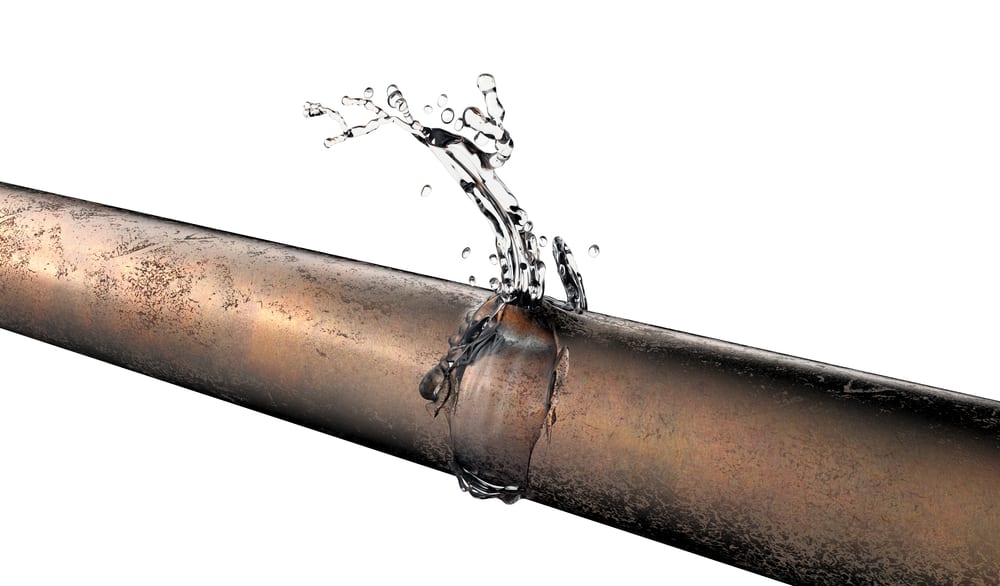Detect Invisible Water Line Leaks: 6 Smart Hacks
Detect Invisible Water Line Leaks: 6 Smart Hacks
Blog Article
The article in the next paragraphs in relation to Leaking water lines is totally enlightening. You should investigate it.

The moment you discover a leakage, calling your plumber for repairs is the best remedy. Nonetheless, some little water leakages may not show up. Below are some hacks that help if you can not discover it with your naked eyes.
Early detection of dripping water lines can alleviate a prospective disaster. In addition to saving you cash, it will decrease the aggravation and frustration.
Examine Water Consumption
Examine your water costs and track your water usage. As the one paying it, you must see if there are any inconsistencies. If you identify sudden changes, regardless of your consumption being the same, it implies that you have leaks in your plumbing system. Bear in mind, your water costs need to drop under the very same range every month. A sudden spike in your costs suggests a fast-moving leak.
A stable boost every month, also with the same behaviors, reveals you have a sluggish leak that's also slowly rising. Call a plumber to extensively check your residential or commercial property, specifically if you really feel a cozy location on your flooring with piping beneath.
Evaluate the situation and inspect
Homeowners need to make it a behavior to inspect under the sink counters and also inside cupboards for any bad odor or mold and mildew growth. These two red flags suggest a leak so timely attention is required. Doing routine assessments, even bi-annually, can save you from a major trouble.
Take A Look At the Water Meter
Examining it is a guaranteed way that aids you find leaks. If it relocates, that indicates a fast-moving leakage. This implies you might have a slow leakage that could also be underground.
Asses Outside Lines
Do not fail to remember to examine your outdoor water lines also. Test spigots by affixing a garden tube. Ought to water permeate out of the link, you have a loose rubber gasket. Change this and guarantee all links are limited. It will help get it expertly took a look at and also preserved every year if you've got a sprinkler system. One tiny leakage can lose lots of water and surge your water expense.
Do a Food Coloring Test
When it comes to water consumption, 30% comes from commodes. If the color somehow infiltrates your bowl throughout that time without flushing, there's a leakage in between the container and bowl.
Inspect for stainings as well as weakening as many devices and pipes have a life expectancy. If you presume leaking water lines in your plumbing system, do not wait for it to escalate.
The minute you locate a leakage, calling your plumber for fixings is the best solution. Some little water leakages might not be visible. Inspecting it is a surefire way that assists you find leaks. One little leakage can squander lots of water and increase your water expense.
If you suspect dripping water lines in your plumbing system, don't wait for it to rise.
How to Know If Your Home Has a Hidden Leak
Water Meter Reveals Inexplicable Water Usage
If you’d like to test whether or not there’s a leak somewhere in your home, you can do this using your water meter. Here is how to conduct the test:
Don’t use any water in your home for at least 30 minutes; this also means not turning on faucets or water-using appliances.
Go outside, and check your water meter for activity.
If your water meter shows that there was activity, even though no one was using any water, this proves that there is a leak in your home.Visible Mold or Mildew Growth
Leaks behind walls create moist, dark environments that allow mold and mildew to grow and thrive. Eventually, you might see mold growth forming on the wall closest to a hidden leak.
If mold is growing in an area that receives a high amount of moisture, such as a bathroom, it may simply be an indication that better ventilation is needed. However, if you see mold growth on a wall or the ceiling in an area where you would not expect, you probably have a hidden leak.
Musty, Mildew Odor
Sometimes you might not be able to see the mold or mildew that is growing as a result of a leak. However, the smell can give the problem away just as easily. If you catch a whiff of something musty, there’s a good chance that old water is collecting somewhere in your home that you can’t see.
Stained/Warped Walls, Ceilings, or Floors
When your home soaks up water, a variety of red flags can become visible, including ceiling stains, bubbling drywall, warped walls, and sagging floors. While these issues can be caused by excess humidity, they can also be signs that a pipe or plumbing connection has started leaking behind your walls.
Inexplicably High Water Bill
After a while, you get a general sense for what your water bill should be. If you own a pool or sprinkler system, your bill will tend to be higher during summer. However, if you receive a water bill that seems especially high, and you can’t figure out what caused it, then you may have a hidden leak somewhere that’s increasing your bill.
https://www.plumbingjoint.com/blog/2019/july/how-to-know-if-your-home-has-a-hidden-leak/

Do you appreciate reading up on Hacks to detect leaks? Write a comment below. We would be glad to find out your suggestions about this write-up. In hopes to see you back again in the near future. Loved our piece? Please share it. Let someone else check it out. I cherish reading our article about Detecting hidden plumbing leaks.
Problem? Contact now! Report this page